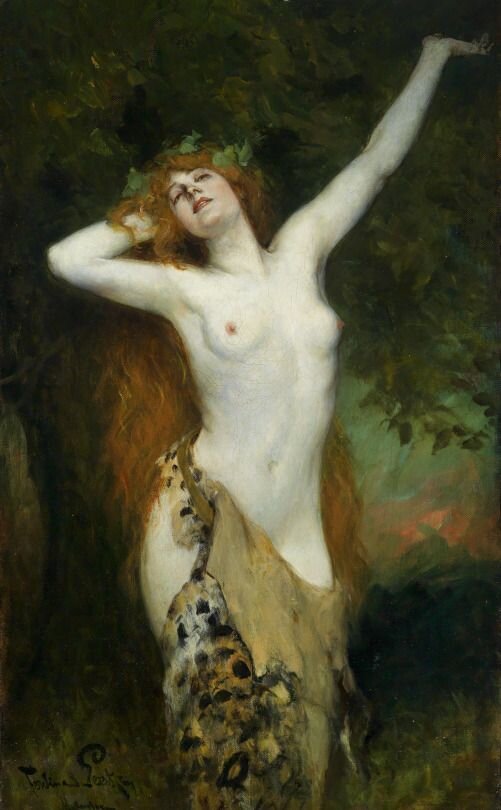Ivy (Hedera Helix)
ifig • efeu • eidheann
Hedera – from Proto-Indo-European meaning “to seize, grasp, take”
Helix – Ancient Greek to “twist, turn”
Main Pollinators: Honey bees, ivy bees, bumble bees, butterflies
Pollen color: Yellow
It happens every year. I am on a walk on a warm fall day in November. The kind of day where you start your walk with a hat and a sweater and end your walk in a t-shirt. It’s always the sound that catches my attention. So late in the season, it’s unusual to hear the loud hum of many foraging bees. Especially when that hum is coming from above you. The bees are foraging on the late winter bloomer: creeping ivy. You know, the kind of ivy that curls up redwood trees or along the brick of old houses? Ivy is found in most of North America, Europe, North Africa and Asia. It spends it’s first 8-10 years focusing on growth, and then turns it’s attention toward flowering.
Ivy Bees in England
I bet you’ve never even noticed the ivy flowers, but the bees sure have. Ivy is a key resource for autumn-foraging bees. While it does provide pollen for many pollinators, honey bees are mainly after the nectar. Ivy honey sets very quickly. Once set, it looks more like crystallized fondant than honey. Bees use this honey as an important food source in the cold winter months. To do so, they have to mix the ivy honey crystals with water to dissolved them enough to be digestible. Humans also harvest and sell ivy honey. To do this they have to slowly warm the honey, being careful not to melt the wax. it’s a tricky process and must be done with utmost care, as to not steal the last of winter stores from the bees.
Ferdinand Leeke
Ivy sometimes gets a bit of a bad wrap. It’s annoying to gardeners and often associated with darkness and “creepy” places such as graveyards. In truth, like other powerfully medicinal plants (seriously, ivy honey is so good for you), ivy has a long history as a plant sacred to the gods. In Celtic lands, Ivy is often associated with the tree alphabet letter “Gort” and carries the serpentine wisdom of transformation within its twisting vines. Throughout Celtic myth and folklore, ivy can be found at the doorway between this world and the fairy kingdom. This is no small thing. The fairy kingdom was more than a place of fancy, it was and is the Celtic Otherworld: a land of mystery, magic and spirit. Ivy marks the doorways where the veil between this world and the world of spirit is thin. They are places to seek wisdom, but also be cautious of, for encounters with spirit can be quite altering.
Ivy is also famously sacred to the god of intoxication, wine and pleasure: Dionysus. Similar to Zeus, who was secreted away and raised on honey by nymphs, the infant Dionysus was hidden from Hera and raised by Nysiades (nymphs) in the ivy-thick woodlands. It is said he was bathed in the spring of Cissusa, meaning “Of the Ivy”, where the waters sparkled like wine and tasted as pleasant. His nymphs and priestesses carried staves entwined with ivy. Dionysus himself wore a crown of ivy, which was meant to protect and guide the experience of intoxication, so that the drinker may only experience the positive benefits of the wine. While Dionysus is commonly associated with drunken revelry, his cult rituals ran much deeper than that. Intoxication does not only come from a heavy night of drinking. One can be intoxicated with spirit and enter a euphoric state. Ivy was not simply a plant of protection, but also a euphoric plant of prophecy. The nymphs/priestesses of Dionysus, known as maenads, were said to be as intoxicated by ivy as they were by wine. It is interesting to note that Ancient Greek brides often carried ivy at their weddings, symbolizing fertility, fidelity and union made in love.
As with most symbols of power, we find a reoccurring theme of polarities. Ivy is associated with death and transformation as well as evergreen life and fertility. It carried both the intoxicant and the sobering effect. It is the twining, serpentine feminine around the sturdy oak and holly king. It guardians the Otherworld and bears it’s nectar to the honey bee, she who fluidly flies between the world of the living and the world of the dead. It brings the transformative powers of deeply altered states and it binds and entwines through the commitment to love.
John Collier – Maenads




+ show Comments
- Hide Comments
add a comment